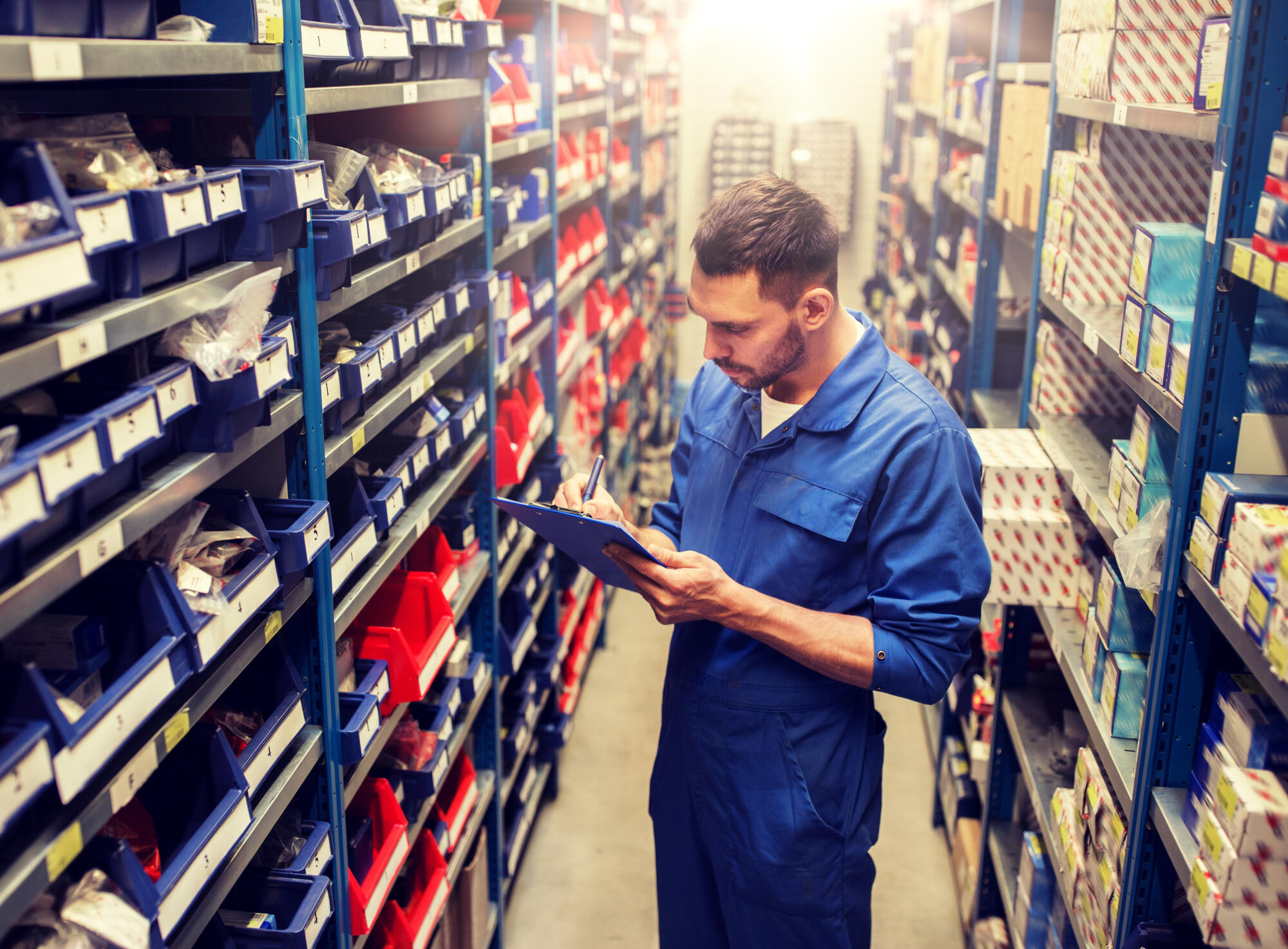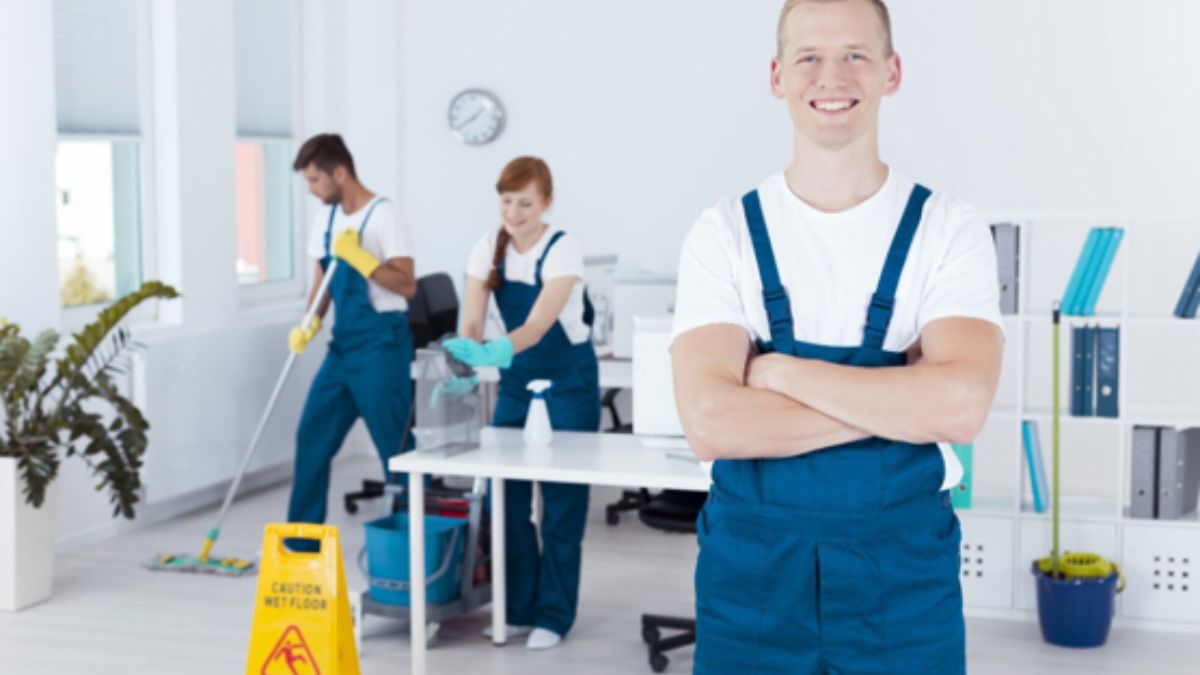HOME IMPROVEMENT
Adapting Living Spaces to Meet Changing Mobility Needs

As we grow older or cope with limited mobility, our living spaces may not always cater to our evolving needs. A home that once felt secure and accommodating can present unexpected challenges, such as stairs, narrow hallways, or hard-to-reach fixtures. Similarly, property managers and caregivers must also consider how to make accommodations for disabled tenants or elderly residents. By proactively adapting living areas, we can create environments tailored to ensure comfort, independence, and safety.
This blog explores key areas to consider when adjusting homes for changing mobility needs. Whether you’re a caregiver, property manager, or someone navigating mobility limitations, these tips can help create more accessible and inclusive spaces.
Prioritize Accessibility in Key Areas
When adapting a home or property to improve mobility, the focus should first fall on areas of daily routine and necessity. This includes the bathroom, kitchen, and entryways.
Bathroom Modifications
Slippery floors, high bathtubs, and limited support can make bathrooms hazardous for those with limited mobility. Consider these changes:
- Install grab bars: Place them near the toilet and within the shower or bathtub area for added stability and support.
- Roll-in showers: Replace traditional tubs with walk-in showers that feature level floors and seating options.
- Non-slip flooring: Opt for textured or non-slip flooring surfaces to reduce fall risks.
Kitchen Adjustments
Kitchens are another common area of activity that can be challenging for people with limited mobility. Some modifications include:
- Lowered countertops: Adjust the height of counters for those who use wheelchairs.
- Pull-out shelving: Easy-to-reach storage reduces strain while retrieving items.
- Touchless faucets: These are easier for people with arthritis or limited arm strength to use.
Eliminating Entryway Obstacles
Entryways equipped with stairs, thresholds, or narrow doors can pose significant challenges. Consider the following solutions:
- Ramp installations: Ramps provide a slope that offers safer access for wheelchairs, walkers, or strollers.
- Widen doors: Widening door frames can make spaces wheelchair accessible. Aim for at least a 32-inch clear opening.
- Automatic door openers: These are particularly useful in buildings managed by property managers.
Implement Vertical Accessibility Solutions
For multistory homes and apartments, stairs remain one of the most common barriers for mobility-challenged individuals. Thankfully, there are vertical solutions available to overcome these obstacles.
Stairlifts and Chairlifts
Stairlifts are an efficient solution for single-person use, particularly in residential properties. These can be attached directly to the staircase and transport users up and down levels seamlessly.
Home Elevators
Larger and more versatile than stairlifts, home elevators are becoming increasingly popular options for accessibility. They accommodate wheelchairs and multiple passengers, making them ideal for families or shared residences. This vertical platform helps maintain independence with minimal disruption to the living environment. For example, home elevator installers in Salt Lake City, UT specialize in tailoring unique lift solutions that blend with the home’s design while ensuring safety and functionality.
Vertical Platform Lifts
A cost-effective alternative to full-scale elevators, platform lifts are particularly helpful with entryways or short-height level changes, such as garage steps.
Light and Smart Designs for Enhanced Mobility
A well-lit and intelligently designed space isn’t just visually appealing—it also improves navigation and safety for individuals with reduced mobility.
Smart Lighting Systems
Smart lighting systems can instantly adjust settings with a voice command. Proper lighting placement also minimizes strain on the eyes and ensures safe passage, particularly in hallways and staircases.
Smart Home Technology
Thermostats, window blinds, and even door locks can now be automated and controlled from a central device, offering convenience and minimizing dependency on others for assistance.
Rearranging Furniture
Open layouts and thoughtfully arranged furniture remove obstacles, offering smoother pathways for those using mobility aids like walkers or wheelchairs.
Build a Sense of Community and Inclusivity
Property managers or caregivers should remember that adapting living spaces isn’t just about physical upgrades—it’s about creating a sense of belonging. By adopting accessible design and regular upkeep processes, you demonstrate a commitment to inclusivity and safety. For example:
- Community spaces: Ensure shared areas within apartment buildings or neighborhoods are equally accessible, with ramps or wheelchair lifts wherever needed.
- Ongoing maintenance: Regularly check that all accessibility features—such as grab bars, ramps, or elevators—are functioning properly.
Take the First Steps Toward Adaptation
Adapting a living space to meet changing mobility needs requires identifying individual challenges while balancing functionality, aesthetics, and budget constraints. From small updates like grab bars to significant changes like installing home elevators, each improvement contributes to creating a safer and more comfortable environment.
Living spaces should evolve to empower users, allowing them to live independently and with dignity. Whether you’re assisting an elderly loved one, managing a building, or making your home more accessible for personal needs, these adaptations can make all the difference.
- adaptations
- Home improvements
- Independent living solutions
HOME IMPROVEMENT
Reasons to Invest in High-Quality Exterior Paint

Every home speaks through its exterior. The walls, siding, and trim not only serve as a barrier from the elements but also shape first impressions. A well-kept exterior signals attention to care and longevity, while faded or peeling paint hints at neglect. The decision to invest in high-quality exterior paint can affect not just how a house looks, but how well it holds up over time. Beyond appearance, this choice has implications for property value, structural integrity, and ongoing maintenance costs. Selecting the right paint means thinking beyond color, it involves recognizing the role that quality plays in protection, performance, and durability.

Longer Lasting Protection
A major concern for any homeowner is how often the exterior of their house needs to be repainted. Climate, sun exposure, and moisture levels can all wear paint down far sooner than expected. When lower-grade paint is used, this wear accelerates, often resulting in chipping, cracking, or discoloration within just a few seasons. Higher-quality paint, by contrast, has a denser pigment load and more durable resins that better withstand UV rays, rain, wind, and temperature shifts. These features help extend the lifespan of your exterior paint, giving you more years between repainting and reducing long-term upkeep. With fewer repainting cycles required over the life of a home, the added cost of premium paint becomes a practical investment.
Improved Color Retention and Finish
When freshly applied, most paints look vibrant and smooth. The difference becomes clear over time. Inexpensive paint tends to fade faster, often turning chalky or uneven as pigments degrade. Quality paint includes advanced technology designed to hold color and resist fading, even after years under intense sunlight or harsh seasonal changes. This means the look chosen during application will stay closer to its original shade, resisting the washed-out or yellowed effect that can appear on cheaper coatings. A stable, consistent finish not only maintains curb appeal but also reflects better on property maintenance, whether for resale or personal pride.
Better Resistance to Weather and Environmental Stress
Exterior paint needs to hold up against far more than just sun and rain. Snow, frost, salt spray, mildew, and pollution all put pressure on a building’s surface. A low-grade paint can become brittle in cold weather or sticky in the heat, expanding and contracting unevenly, which may lead to cracks or peeling. On the other hand, high-quality exterior paints are engineered to adapt to seasonal changes. They form flexible, breathable films that move with the material underneath, whether it’s wood, brick, or siding. This adaptability prevents moisture from getting trapped, which reduces the risk of mold or rot and lowers the chances of costly structural repairs.
Stronger Adhesion and Coverage
Many assume that all paint covers a surface in the same way. This isn’t the case. Lower-end paints often require more coats to achieve the same opacity and finish, and even then, they might not adhere evenly. High-grade paint contains a richer concentration of solids, which are the binders and pigments that remain after the solvent evaporates. This means better coverage per gallon and less paint needed overall. With stronger adhesion, it clings to surfaces more effectively, reducing flaking and blistering over time. The end result is a smoother, more uniform appearance that lasts longer and looks more professional from the first application.
Lower Long-Term Maintenance Costs

A fresh coat of paint might seem like a cosmetic upgrade, but over time, it becomes a layer of protection that can help prevent damage. Poor-quality paint may save money upfront, but it often leads to more frequent touch-ups, repairs, or full repaints. These repeated jobs increase labor costs and consume time that could be spent elsewhere. On the other hand, higher-quality paint minimizes the need for ongoing maintenance. Its resistance to cracking, fading, and mildew cuts down on cleaning and repairs. With better durability, homeowners can wait longer before repainting, which leads to meaningful savings over the life of the home. For anyone thinking beyond the short term, the reduced cost of maintenance becomes a compelling reason to choose quality from the start.
Increased Property Value and Buyer Appeal
First impressions matter when selling a house. A well-maintained exterior, coated in long-lasting, rich-colored paint, can elevate the perception of the entire property. Buyers often view the condition of the paint as an indicator of how well the home has been cared for overall. When the exterior appears fresh and solid, it can increase interest and shorten time on the market. While it’s difficult to quantify the exact return on investment from high-quality paint, homes with professional finishes tend to show better and sell faster. The money spent upfront can translate into higher offers or smoother negotiations. Even if a sale isn’t imminent, a well-kept exterior reflects pride in ownership and adds lasting visual appeal to the neighborhood.
Choosing high-quality exterior paint is about far more than color choice or brand recognition. It’s a decision that influences how long a home looks its best, how well it’s protected, and how much maintenance will be required in the years ahead. A better paint today means fewer worries tomorrow, and a home that holds its strength and style, season after season.
BUSINESS
The Role of Genuine Auto Parts in Sustainable Vehicle Practices

Do you know how the parts in your car affect the planet?
When vehicles use genuine auto parts, they run better and last longer. These parts are made to fit the car exactly, so they don’t wear out too fast. That means fewer repairs and less waste.
Using the right parts also helps the engine work more efficiently. This can lower fuel use and cut pollution. Choosing genuine parts is not just good for your car.
Let’s explore how they help build a cleaner and greener world for everyone.
Helps Engines Run Clean
Using genuine auto parts helps your engine stay clean and run better. These parts are made to match your car’s needs, so they fit well and work the way they should. This helps the engine burn fuel properly, which means fewer harmful gases go into the air.
When engines run clean, they also stay in good shape longer. Clean engines don’t have to work as hard, which helps lower the chance of damage. This can lead to fewer trips to the repair shop.
Keeping the engine clean also helps the environment. It means less smoke, fewer pollutants, and better air quality. Using the right parts is a small choice that can lead to a big difference over time.
Reduces Frequent Replacements
Genuine auto parts last longer than cheap or fake parts. They are built to meet the car maker’s standards, so they do not break easily. This means you won’t need to replace them as often, which saves time and money.
Frequent replacements also create more waste. By using parts that last, you help lower the amount of old parts being thrown away. It also cuts down on the energy used to make new ones.
For example, many drivers shop auto parts at Roseville because they trust the quality. Getting the right part from the start helps avoid more repairs later. It’s a smart way to care for both your car and the planet.
Lowers Fuel Use
Using genuine parts helps your car use fuel more wisely. When parts fit well and work right, the engine doesn’t have to work too hard. This makes it easier to drive and cuts down on gas use.
Saving fuel is not just good for your wallet. It also means fewer trips to the gas station and less pollution in the air. Over time, small fuel savings can add up to a big impact.
Bad parts can cause problems with how your engine runs. They may lead to more fuel being burned than needed. Using real parts helps avoid that and supports greener driving every day.
Supports Recycling Systems
Many genuine auto parts can be recycled once they wear out. Makers often design them using materials that are easy to take apart and reuse. This helps reduce the need to mine or make new materials from scratch.
Recycling old car parts keeps waste out of landfills. It also helps save energy and lowers pollution from factories. By using real parts, you support this helpful cycle.
Car makers and shops often collect old parts for recycling. This is easier to do with genuine parts because they are labeled and sorted by type.
Why Smart Part Choices Matter
Choosing the right parts for your car helps both you and the world around you. When your car runs well, it uses less fuel and creates less waste. Small changes can lead to better habits and a cleaner future for everyone.
For more helpful blog posts like this one, visit the rest of our site!
HOME IMPROVEMENT
Your Partner in Clean: Commercial Cleaning Experts

Ever wonder why some places always look neat, bright, and fresh each day?
A clean space helps people feel calm, focused, and ready to get things done. For many busy workplaces, staying clean takes more than a quick sweep or wipe. If you’ve been trying to keep up or want better results, there’s a smarter way.
Keep reading to see how trained cleaning experts can make a big difference every day.
Clean Workspaces Boost Focus
It’s hard to focus when trash piles up or floors feel sticky under your shoes. A clean space helps your mind stay clear and your work move faster.
When everything looks neat, people feel more at ease and less stressed. Even the air can feel lighter in a well-kept space.
Clean work areas help limit distractions and reduce tension during the day. With less mess around, it’s easier to stay on track and finish tasks. A little cleaning goes a long way.
Tools That Get Results
Using the right tools makes a big difference in how clean things get. Strong vacuums, steady mops, and quiet machines help workers clean faster and better.
These tools reach deep corners and pick up more dirt than hands alone. They help save time while also making each task more complete. With better tools, cleaners work faster without missing the hard parts.
Each pass leaves the area looking fresher and feeling safer. Good gear helps get strong results and keeps things moving.
Trained People, Better Service
Cleaning takes more than wiping a surface or sweeping the floor. Trained cleaners spot small messes and know where to focus first. They move with care and work in a steady, thoughtful way each time.
Their timing, attention, and effort all help the job come out better. They clean deeper and faster because they know what each task needs.
That kind of skill doesn’t come by chance. It grows with training and time. A well-trained cleaner helps your space feel neat, safe, and fresh.
Flexible Cleaning Schedules
Some places need cleaning early, while others need it after everyone goes home. That’s why flexible cleaning hours can help so much in busy workplaces.
Every place runs on a different clock, and cleaning should fit right into that flow. Teams can come in during slow hours or once the day ends.
For those in or near the area, corporate cleaning services in Alabama and Tennessee often offer this kind of setup. It helps keep things clean without getting in the way of daily work.
Health Hazards Get Reduced
Germs can spread fast when floors, desks, and handles stay dirty for too long. A clean space helps stop that from happening and keeps people from getting sick at work.
Regular cleaning clears away dust, trash, and germs that build up each day. When the air feels fresh and the surfaces stay clean, people feel safer, too.
It also helps cut down on sneezing, coughing, and other signs of poor air. Clean areas lower the chance of sickness and make the space feel much better.
You Can’t Go Wrong With Commercial Cleaning Experts
A clean place helps people feel good and work better. When trained cleaners handle the job, you don’t have to worry about dust, mess, or germs. They know what to do and how to do it right.
With the right help, your space can stay neat every day. It saves time, keeps things safe, and makes your workplace a better place to be.

 Cartoon1 year ago
Cartoon1 year agoUnlocking the Potential of Nekopoi.care: A Comprehensive Guide

 Game1 year ago
Game1 year agoExploring Aopickleballthietke.com: Your Ultimate Pickleball Destination

 BUSINESS1 year ago
BUSINESS1 year agoWhat Companies Are In The Consumer Services Field

 BUSINESS1 year ago
BUSINESS1 year agoUnraveling the Mystery of 405 Howard Street San Francisco charge on Credit Card

 HOME IMPROVEMENT1 year ago
HOME IMPROVEMENT1 year agoVtrahe vs. Other Platforms: Which One Reigns Supreme?

 TECHNOLOGY1 year ago
TECHNOLOGY1 year agoThe Guide to Using Anon Vault for Secure Data Storage

 ENTERTAINMENT11 months ago
ENTERTAINMENT11 months agoUnderstanding Bunkr Album: A Comprehensive Guide

 ENTERTAINMENT1 year ago
ENTERTAINMENT1 year agoThe Epic Return: Revenge of the Iron-Blooded Sword Hound
















